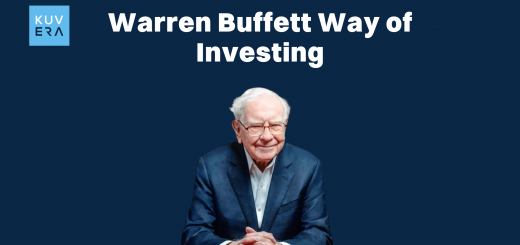When it comes to passive funds, going with the market flow is the basic ideology. This passive funds ideology can benefit investors in the long run. But how? Picture yourself floating down a lazy river, letting the currents take you along while you soak in the beautiful scenery. Now, imagine if investing could be this relaxing.
Can we invest without the stress of constant decision-making? Sounds great, right? That’s the essence of passive funds—just going with the flow.
Let’s dive deeper into how investing in passive funds can be a smooth and rewarding journey.
What are Passive Funds?
Passive funds are mutual funds that mirror the performance of a specific index, like the Nifty 50 or the Sensex. Unlike active funds, where fund managers actively select stocks to outperform the market, passive funds take a hands-off approach. They invest in the same securities as the index they track, ensuring they replicate its performance.
The goal isn’t to beat the market but to match its returns, providing a steady, reliable investment option.
Want to learn more about passive funds? Check out this detailed guide here.
Avenues for Passive Funds Investment
Passive funds investing can be explored through these four investment choices:
1. Benchmark and Broad-based Index Funds:
These mutual funds track benchmark and broad-based market indices, such as Nifty 50, Sensex 30, Nifty 500, Nifty 200 and S&P 500.
2. Exchange-Traded Funds (ETFs):
Similar to index funds, ETFs are traded on stock exchanges, just like individual stocks and bonds.
3. Smart Beta Funds:
These funds track passive indices created using specific rules or factors like value, size, or momentum to select stocks instead of just following a market index. This approach aims to achieve better potential returns or reduce risk compared to traditional index funds.
Check out all types of Index funds on Kuvera here.
The Rise of Passive Fund Investing
Over the past few decades, passive investing has experienced exponential growth globally. The appeal of low-cost, low-maintenance investment vehicles like index funds and ETFs has captivated both individual and institutional investors.
Underperformance of Active Funds vs. Indices in the US

A significant reason investors are turning to passive funds is the increasing difficulty active fund managers face in beating the Index.
According to the SPIVA report published by S&P, an average of 60-70% of active funds underperform the S&P 500 each year on a 1-year return basis.
Underperformance Worsens Over Longer Timeframes
Things only seem to get worse as we look at returns over a longer period. While some fund managers may outperform the index in a given year, sustaining that performance over the long term proves challenging.
The SPIVA report further reveals that over a 3-year and 5-year timeframe, about 80% of the fund managers in the US have underperformed the S&P 500. Over a 10-year timeframe, this underperformance increases to 87%. This data underscores the difficulty active funds face in consistently beating the index.
Active funds in India Also Underperforming
According to the SPIVA India Year-End 2023 report, over both 3-year and 5-year periods, more than 80% of equity large-cap funds could not beat its benchmark market index. In the case of mid- and small-cap funds, over 50% of the funds underperformed compared to their benchmark market performance.
Passive Funds: Going with the Flow
So why do active funds struggle to beat their indices, and why should you consider investing in passive funds?
Let’s explore the reasons:
1. Difficulty in choosing the right fund manager: Predicting which fund manager will consistently beat the index over the long term is challenging. Past performance is no guarantee of future returns. The star managers of yesterday might become the underperformers of tomorrow. Choosing active funds requires betting on the right manager, which is easier said than done.
2. Style agnostic: Index funds are free from fund manager biases and investment styles. In contrast, an active fund manager may choose a particular style (value or growth investing). If the style is in flavour, they may outperform the index, but if it goes out of flavour and the manager cannot adjust to a new style, they may underperform the index.
3. Comprehensive checklist for selecting an active fund: Selecting an active fund involves evaluating numerous metrics, including:
-
- Historical performance over different timeframes
- Performance relative to other funds
- Fund manager style and bias
- Portfolio holdings and weightage
- Portfolio turnover ratio
- Expense ratio
- Measure of risk-weighted return (Sharpe ratio)
- Exit load/lock-in period
With so many factors to consider, investing in active funds can be daunting for many investors. If you prefer a simpler approach, passive index funds can be your ideal solution.
Start investing in Index Funds.
Market Benchmarks for Passive Funds in India
India offers several prominent market indices as benchmarks for index fund investing, including:
1. Nifty 50: Comprising 50 of the largest and most liquid Indian stocks, it is a barometer of the Indian economy’s health.
2. Sensex (BSE 30): Includes 30 financially sound and well-established companies listed on the Bombay Stock Exchange.
3. Nifty Next 50: Represents the 50 companies ranked 51st to 100th in market capitalisation on the NSE, offering exposure to the next tier of growth companies.
4. Nifty 500: Covers the top 500 companies listed on the NSE, providing a broad perspective on the market.
Popular Global Benchmark Indices
On the global stage, several indices stand out as benchmarks for passive fund investment. The indices that can be invested through the Indian mutual fund route are:
1. S&P 500 (USA): Tracks 500 of the largest companies listed on stock exchanges in the United States, providing a broad measure of the US stock market.
2. Nasdaq 100 (USA): Includes 100 of the largest non-financial companies listed on the Nasdaq, representing industries like technology, healthcare, and consumer services. Known for its tech-heavy composition, it features giants like Apple, Amazon, and Microsoft, making it a key indicator of the tech sector’s performance.
Historical Performance of Indian Indices
| Index | Type | 3-Year Returns (%) | 5-Year Returns (%) |
|---|---|---|---|
| BSE SENSEX - TRI | Benchmark Index | 16.4 | 17.0 |
| NIFTY 50 – TRI | Benchmark Index | 17.0 | 17.4 |
| BSE 200 – TRI | Broad-Based Index | 19.8 | 20.1 |
| Nifty Next 50 TRI | Broad-Based Index | 24.7 | 23.4 |
| Nifty Midcap 150 TRI | Broad-Based Index | 28.4 | 29.3 |
| Nifty Small Cap 250 TRI | Broad-Based Index | 27.7 | 29.8 |
Data as of July 8, 2024. TRI refers to the Total Return Index. Returns are calculated on a compounded annualised basis for periods longer than a year and on an absolute basis for periods of a year or less.
In Summary
Passive fund investing truly epitomises the art of going with the flow. By aligning your investments with market trends, you can achieve steady, long-term growth without the stress of active management. Whether you’re investing in Indian indices like the Nifty 50 and Sensex or global benchmarks like the S&P 500 and FTSE 100, passive funds offer a simple, cost-effective, and diversified way to build your financial future.
Interested in how we think about the markets?
Read more: Zen And The Art Of Investing
Watch here: How To Save Income Tax On Your Mutual Fund Investments
Start investing through a platform that brings goal planning and investing to your fingertips. Visit kuvera.in to discover Direct Plans of Mutual Funds and Fixed Deposits and start investing today.
AREVUK Advisory Services Pvt Ltd | SEBI Registration No. INA200005166
DISCLAIMER: Mutual Fund investments are subject to market risks. Read all scheme related documents carefully. Registration granted by SEBI, membership of BASL (in case of IAs) and certification from NISM in no way guarantee performance of the intermediary or provide any assurance of returns to investors. Investments in securities market are subject to market risks. Read all the related documents carefully before investing. The securities quoted are for illustration only and are not recommendatory.












